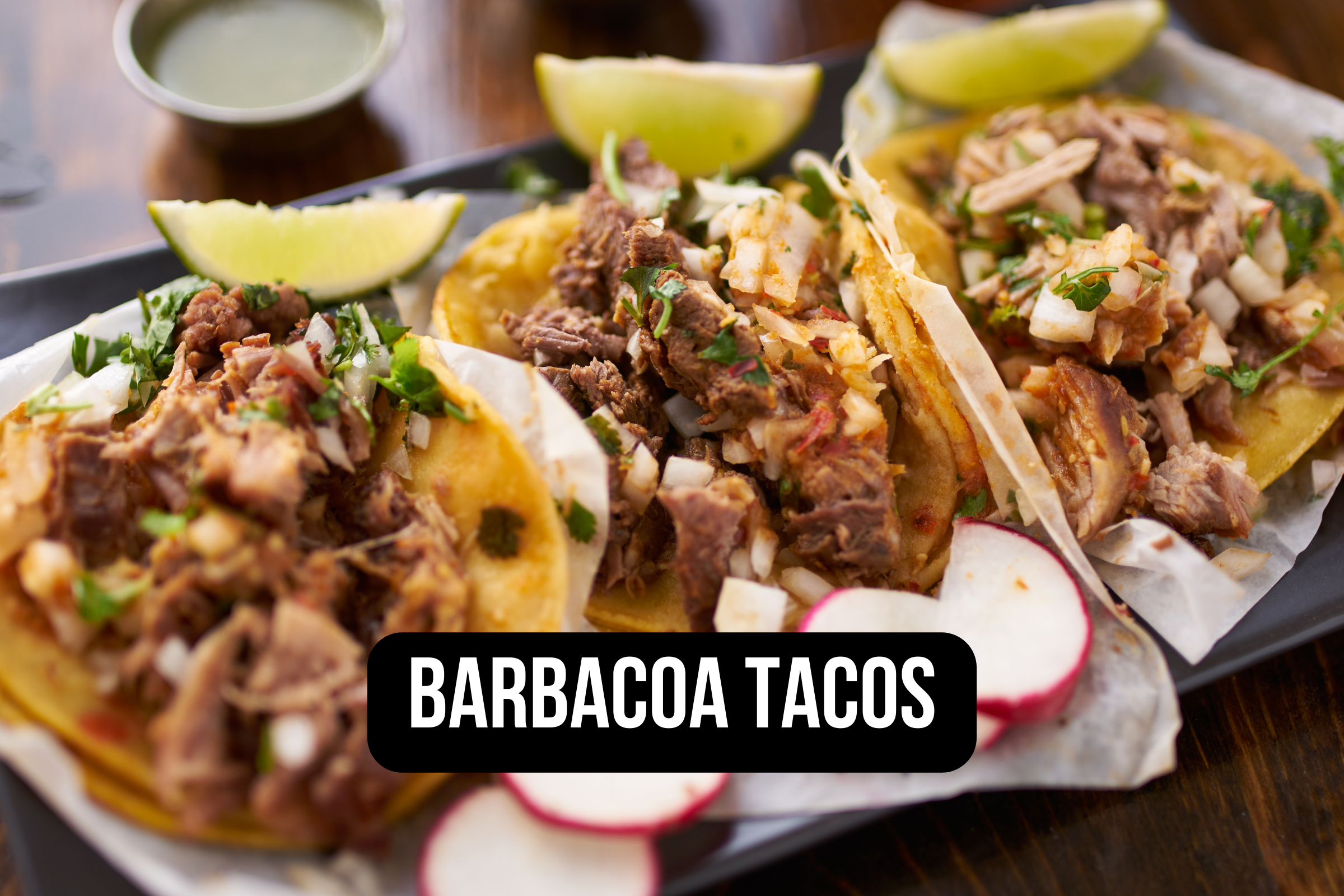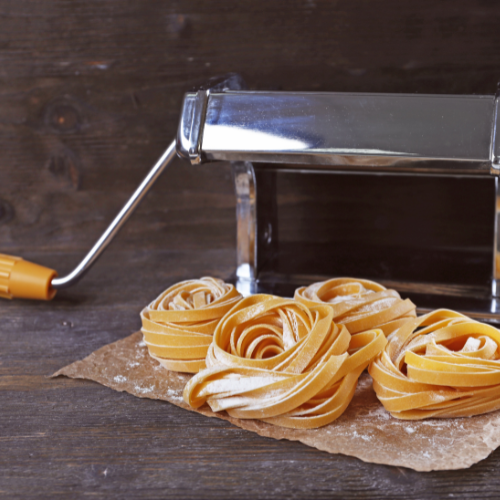The Intricate Fusion: Defining Chipotle Carne Asada
Introduction: The Savory Symphony of Chipotle Carne Asada
Carne Asada, in its most essential form, is a marinated steak grilled to perfection and served typically in tacos, burritos or on its own. However, it is far more than just a dish. It's a cultural icon that bursts with flavors and tells the tale of a rich culinary heritage.
The term 'Carne Asada' when translated from Spanish denotes 'grilled meat,' marking the simplicity of its preparation yet underlining the intricacy of its flavor profile. The phrase 'Chipotle Carne Asada' introduces an additional element to this dish - the chipotle pepper.
This smoked-dried jalapeno brings an unmistakable smoky heat to the table, augmenting the carne asada marinade with layers of flavor depth. Thus, Chipotle Carne Asada can be best defined as a symphony of savory steak marinated in a chipotle-infused concoction, grilled to perfection and usually presented in traditional Mexican servings like tacos.
Origins: A Culinary Journey back in Time
The roots of Carne Asada trace back to the indigenous cultures that flourished in what is now known as Mexico before Spanish arrival—these civilizations valued chili peppers and meat as significant components of their diet. When Spanish conquerors arrived in the 16th century with cattle and novel cooking methods like grilling (asado), these culinary traditions began to intertwine.
The resulting fusion gave birth to what we now recognize as Carne Asada - grilled beef often prepared with certain signature ingredients such as citrus juices for tenderizing, garlic for adding depth, and chili peppers for imparting heat. In particular regions within Mexico such as Sonora or Jalisco where beef was abundant, this method of preparation gained immense popularity quickly.
The Global Gastronomic Phenomenon: Chipotle Carne Asada
As time went on, regional variations of Carne Asada began to develop across Mexico and beyond. The dish spread to other Latin American countries, each adding its unique twist.
By the mid-20th century, with Mexican immigrants moving northwards, Carne Asada found a new home in the United States where it was enthusiastically received. The addition of chipotle to the carne asada marinade is a relatively recent development that can be credited mainly to the fast-casual restaurant chain, Chipotle Mexican Grill.
The chain introduced their version of Carne Asada - marinated in a blend featuring chipotle peppers - which quickly became popular for its spicy kick and smoky undertones. Today, whether served in tacos or savored as steak on its own, chipotle carne asada stands as a testament to the culinary creativity that spans continents and delights palates globally.
History of Chipotle Carne Asada: From Ancient Traditions to Modern Tables
Ancient roots: The use of chili and meat in Pre-Columbian cultures
The culinary story of the Chipotle Carne Asada, like many popular dishes today, has ancient roots that can be traced back to Pre-Columbian cultures. A time when cooking was a tale of survival and food was a sacred endowment from the gods themselves.
It was during this era that the rudimentary foundations that make up the Carne Asada were laid. Historically, indigenous tribes residing in what is now modern-day Mexico utilized both chili and meat as staple ingredients in their diet.
Meat, procured from hunting or domesticated animals, was often smoked or dried; this technique not only preserved the meat but also enriched it with distinct flavors. Meanwhile, chili provided a unique fiery zest that perfectly complemented the rich smokiness of their meats.
Chili's versatility went beyond its role as a spice; it was used for medicinal purposes and even as a form of currency. This ancestral affinity for chili and meat set the stage for much culinary innovation in future centuries—innovation that would birth what we recognize today as Carne Asada.
The Aztec Empire's influence on Mexican cuisine
A significant contributor to this evolution is credited to one of history’s most celebrated civilizations—the Aztec Empire. An empire renowned as much for its grandeur and cultural sophistication as its contributions to global gastronomy—including an early iteration of the beloved steak recipe known today as Carne Asada. The Aztecs developed advanced agricultural systems which led to an abundance of diverse produce including varieties of chili peppers- an integral ingredient in any authentic Carne Asada Marinade.
They combined these chilies with their smoked meats to create a primitive version of our modern Carne Asada. The Aztecs also introduced the world to several other key components that would come to define Mexican cuisine, such as corn, beans, and tomatoes.
As they expanded their empire, the Aztec culinary influence spread across different regions. These regional variations persist to this day and are part of what makes Mexican cuisine so diverse and rich.
Central Mexico is known for its succulent pork dishes while the coastal areas excel in seafood delicacies. However, it is in the north where Carne Asada truly reigns supreme.
The role of chili peppers in ancient culinary traditions
Chili peppers have always held a prominent place in Mexican gastronomy since ancient times. They served not just as food but also as medicine and even currency within some pre-Columbian societies. To these past cultures, chili represented so much more than just a spice—it was an integral part of daily life that permeated every societal stratum.
The heat and flavor provided by chillies were cherished additions to their traditionally bland diets at the time. Even today, an authentic Carne Asada Marinade would be incomplete without a generous addition of chili pepper—preferably chipotle—to give it that quintessential kick.
In essence, chilies were more than mere condiments—they were symbols of vitality and life itself. It’s no surprise then that they continue to be an immutable part of Mexican cuisine today; their fiery spirit encapsulates everything from homely Tacos al Pastor to Chipotle's celebrated Carne Asada.
Spanish Influence: Introduction of grilling techniques (Asado)
The Spanish conquest brought new cooking techniques like grilling or 'asado' which had a decisive influence on the evolution of indigenous food preparations like Carne Asada. The Spanish, ardent lovers of roasted and grilled meats, shared their culinary techniques with the native populations, leading to a revolution in the way meats were prepared. This exchange gave birth to what we today call Carne Asada - literally "grilled meat".
This technique of grilling meat over an open fire or on a spit was adopted and adapted by each region in its own unique way, thus contributing to the rich diversity of Mexican cuisine. The modern concept of Carne Asada owes its existence to this fusion of ancient traditions and foreign influences.
Spanish influence extended beyond cooking methods; they introduced cattle into the American continent. These bovines would later become the preferred choice for making Carne Asada due to their flavorful meat - another testament to how international influences have shaped this beloved dish.
The fusion of indigenous and Spanish culinary traditions
The fusion between indigenous and Spanish culinary traditions gave rise not only to new food preparations but also a new culture altogether: The Mestizo culture – a blend of indigenous Mexican and European traditions. This hybrid culinary tradition was rich with diversity as it combined local ingredients like corn, chili peppers with livestock meats such as beef and pork brought by the Europeans.
And so, from this melting pot emerged dishes like Tacos filled with Carne Asada that soon became staples on every Mexican table. It is fascinating how these flavors collided, merged, evolved and resulted in a gastronomic tapestry that continues to enchant palates around the world today.
What began as survival food for ancestral tribes morphed into celebratory feasts during Aztec reigns before transforming again under Spanish rule into something akin to our contemporary version of Carne Asada – all while maintaining an indelible link back to its roots.
Ingredients & Recipe for Chipotle Carne Asada
The Culinary Palette: Ingredients Required
Chipotle Carne Asada is a symphony of flavors, each ingredient playing its part to create a culinary masterpiece. The star of the show, of course, is the steak.
A good quality flank or skirt steak weighing around 2 pounds will yield enough Carne Asada for about 8 tacos. For the quintessential Carne Asada Marinade that imparts an irresistible smoky and spicy flavor to the steak, you'll need 3 canned chipotle peppers in adobo sauce and 1 tablespoon of the adobo sauce from the can.
The heat from these peppers is balanced by a mix of both citrusy and savory notes: you'll need juice from two limes, four cloves of finely chopped garlic, half a cup each of finely chopped cilantro and orange juice, along with one teaspoon each of ground cumin and dried oregano. To prepare your grill for cooking this masterpiece, equip yourself with some vegetable oil for brushing on the grill grates to prevent sticking.
Once your Carne Asada has achieved its perfect charred exterior, it's time to let it rest. During this time a sprinkle of kosher salt enhances its natural savoriness.
A Symphony in Progress: The Recipe Procedure
To begin crafting your Chipotle Carne Asada masterpiece start with marinating the steak. Add canned chipotle peppers along with their adobo sauce into a blender together with lime juice, chopped garlic, cilantro, orange juice, cumin and oregano.
Blend until smooth then pour this marinade over your steak ensuring it’s thoroughly coated on all sides before covering it and placing it into refrigeration for at least 2 hours or up to overnight. The cooking stage brings out all those tantalizing flavors locked in the marinade.
Prior to grilling, let your steak sit at room temperature for about 30 minutes. Brush your grill grates with vegetable oil to prevent sticking and heat it to high heat, which is ideal for achieving that desired char on your steak.
Grill each side for about 5-7 minutes for medium-rare or adjust time according to your preferred level of doneness. Once grilled, sprinkle with kosher salt and let it rest for about 10 minutes to allow the juices to redistribute throughout the meat.
The Finale: Serving Suggestions
Chipotle Carne Asada is versatile and pairs well with a variety of traditional Mexican accompaniments. Slice the rested steak against the grain into thin strips, which will make them tender while filling out a taco nicely. For assembling tacos, warm up some corn tortillas on a dry pan until they are pliable.
Add a generous serving of Carne Asada onto each tortilla, then top as you wish - common toppings include chopped onions, cilantro, salsa verde or pico de gallo. A squeeze of lime offers a final citrusy freshness.
Alternatively, Chipotle Carne Asada can also be enjoyed alongside rice and beans or in burritos or quesadillas. Regardless of how you choose to serve it, Chipotle Carne Asada promises a flavorful journey through Mexico’s rich culinary heritage.
Variations & Adaptations
A Cornucopia of Dietary Adaptations
While the traditional Chipotle Carne Asada is a carnivore's delight, it would be an oversight not to explore the myriad dietary adaptations that can cater to vegetarian and vegan palates. This speaks to the versatility of this dish.
For instance, Portobello mushrooms make for a delectable substitute for steak. Their meaty texture, when slathered with a smoky Carne Asada marinade and grilled to perfection, creates an equally delicious vegetarian version of the dish.
Another notable alternative is using tempeh or tofu, which absorb flavors well and provide a good protein source for vegans. With a subtle tweak in the marinade recipe - opting for vegan Worcestershire sauce instead of the regular one - one can recreate a vegan Carne Asada that echoes its meaty counterpart's flavor vibrancy.
For those following a pescatarian diet, fish presents itself as an excellent alternative. Firm-fleshed fish such as swordfish or tuna steaks are robust enough to hold up on the grill and bold enough in flavor to stand up to the intense marinade.
The result? Succulent fish tacos oozing with flavors reminiscent of classic Chipotle Carne Asada.
SOME FUN RECIPES TO TRY WITH CARNE ASADA
1. Carne Asada Tacos with Avocado Lime Sauce
Prep Time: 20 minutes
Cook Time: 10 minutes
Total Time: 30 minutes
Servings: 4-6
Ingredients:
2 lbs Carne Asada
12 small corn tortillas
1 large avocado
1/4 cup fresh lime juice
1/2 cup fresh cilantro, chopped
1/2 cup red onion, finely chopped
Salt and pepper to taste
1 tbsp olive oil
Instructions:
Preheat Grill: Preheat your grill to medium-high heat.
Prepare Avocado Lime Sauce: Blend avocado, lime juice, cilantro, salt, and pepper until smooth. Set aside.
Grill Carne Asada: Grill the carne asada for about 5 minutes per side or until it reaches your desired level of doneness. Let it rest for a few minutes, then slice thinly against the grain.
Warm Tortillas: Warm tortillas on the grill for about 30 seconds per side.
Assemble Tacos: Place slices of carne asada on each tortilla, top with red onion, and drizzle with avocado lime sauce.
Serve: Serve immediately.
Nutritional Facts (per serving):
Calories: 400
Protein: 35g
Carbohydrates: 32g
Fat: 15g
Saturated Fat: 4g
Cholesterol: 80mg
Sodium: 300mg
Fiber: 5g
2. Carne Asada Burrito Bowls
Prep Time: 25 minutes
Cook Time: 10 minutes
Total Time: 35 minutes
Servings: 4-6
Ingredients:
2 lbs Carne Asada
3 cups cooked brown rice
1 can black beans, drained and rinsed
1 cup corn kernels
1 cup cherry tomatoes, halved
1/2 cup shredded cheese
1/4 cup sour cream
Fresh cilantro for garnish
Instructions:
Preheat Grill: Heat your grill to medium-high.
Grill Carne Asada: Grill the carne asada for about 5 minutes per side. Rest for a few minutes and slice.
Assemble Bowls: Divide brown rice into bowls. Top with black beans, corn, cherry tomatoes, and sliced carne asada.
Add Toppings: Sprinkle with cheese and dollops of sour cream. Garnish with cilantro.
Serve: Serve the burrito bowls immediately.
Nutritional Facts (per serving):
Calories: 520
Protein: 40g
Carbohydrates: 58g
Fat: 16g
Saturated Fat: 6g
Cholesterol: 85mg
Sodium: 400mg
Fiber: 8g
3. Carne Asada Stir Fry with Vegetables
Prep Time: 15 minutes
Cook Time: 15 minutes
Total Time: 30 minutes
Servings: 4-6
Ingredients:
2 lbs Carne Asada, thinly sliced
2 bell peppers, sliced
1 large onion, sliced
2 cups broccoli florets
2 tbsp soy sauce
2 tbsp olive oil
2 cloves garlic, minced
1 tbsp ginger, minced
Salt and pepper to taste
Instructions:
Prep Vegetables: Slice all the vegetables and set aside.
Cook Carne Asada: In a large skillet or wok, heat 1 tbsp oil over medium-high heat. Add the carne asada and cook until browned. Remove from skillet and set aside.
Stir Fry Vegetables: In the same skillet, add another tbsp of oil. Add garlic, ginger, and vegetables. Stir fry until vegetables are tender-crisp.
Combine: Return the carne asada to the skillet. Add soy sauce and stir well to combine.
Season: Season with salt and pepper to taste.
Serve: Serve the stir fry hot.
Nutritional Facts (per serving):
Calories: 380
Protein: 36g
Carbohydrates: 15g
Fat: 20g
Saturated Fat: 5g
Cholesterol: 75mg
Sodium: 550mg
Fiber: 3g
These recipes provide a variety of ways to enjoy Carne Asada, from traditional tacos to innovative burrito bowls and a stir fry twist. Each recipe is designed for easy preparation and rich, satisfying flavors.
Conclusion
In essence, Chipotle Carne Asada is more than just grilled steak; it's an embodiment of culinary evolution, showcasing how time-honored traditions can dovetail with modern interpretations. It’s about understanding that food is not static – it evolves according to our needs and preferences while retaining its original charm.
The beauty lies not only in savoring this delectable dish but also in appreciating its rich history that extends beyond borders and cultures. Whether you prefer the traditional Carne Asada or its vegetarian, vegan, or pescatarian adaptations, it's a testament to the magic of simple ingredients transformed into a symphony of flavors through skill and time.
So go ahead and grill up your version of Chipotle Carne Asada. After all, there's nothing like sharing food stories over some delicious tacos, no matter what they're filled with!































Patio Grill Station